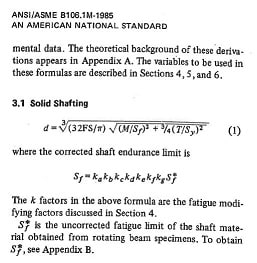Hi everyone, in our facility we have a billet handling machine powered by a shaft with 2 keyways 180° from each other on it's coupling.
We are trying to figure out how much extra weight we can handle but when I try to calculate the Service factor on fatigue stress using Von Mises, i found that there is no fatigue stress concentration factor for 2 keyways. So I do not know how it affects the behaviour and how different is if the keyway is 90° or 180° from each other.
Does anyone already worked with double key?
Regards
We are trying to figure out how much extra weight we can handle but when I try to calculate the Service factor on fatigue stress using Von Mises, i found that there is no fatigue stress concentration factor for 2 keyways. So I do not know how it affects the behaviour and how different is if the keyway is 90° or 180° from each other.
Does anyone already worked with double key?
Regards


